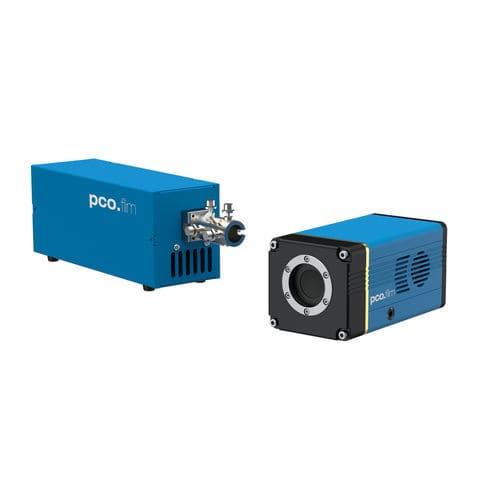
Microscope camera module pco.flimdigitalCMOSfluorescence

Add to favorites
Compare this product
Characteristics
- Applications
- for microscopes
- Technology
- digital
- Sensor type
- CMOS
- Light source
- fluorescence
- Other characteristics
- USB
Description
The pco.flim is the first Frequency Domain FLIM camera using a two tap CMOS sensor. Synchronized modulation of pixels and stimulated light enables you the analysis of luminescence decay times in the range of 100 ps – 100 µs.
With its 1008 x 1008 pixels resolution the pco.flim reads out 45 double frames/s at a max. You can use it for a modulation frequency range of 5 kHz – 40 MHz.
Using C-mount as standard the system is easy to connect to any microscope or lens. Further, the USB 3.0 interface lets you connect the camera to all kinds of computers. This saves you significant efforts and costs for operation and research.
The pco.flim laser is a homogeneously illuminating light source designed for use with the pco.flim. It features a digital modulation frequency range of 0 – 250 MHz. You can either order the pco.flim laser for widefield epifluorescence microscope illumination, or for Total-Internal-Reflection-Fluorescence (TIRF) microscopy, light sheet fluorescence microscopy (LSFM) and confocal spinning disk microscopy.
Choose between a wide range of different wavelengths and light output powers. The laser is ideally suited if your relevant luminescence lifetimes are in the range of a few nanoseconds. In case you are using a Nikon microscope, the Nikon double-safety-shutter option is also available
Key Features
Technical Data
pco.flim laser as light source for epifluorescence measurements
selectable laser wavelengths and light output powers
100 ps – 100 µs lifetimes measurable
5 kHz – 40 MHz modulation frequencies
500 kHz – 40 MHz external modulation signals
modulation signal shape sinusoidal / rectangular
1008 x 1008 pixel resolution
frequency domain FLIM
VIDEO
Catalogs
No catalogs are available for this product.
See all of PCO AG‘s catalogs*Prices are pre-tax. They exclude delivery charges and customs duties and do not include additional charges for installation or activation options. Prices are indicative only and may vary by country, with changes to the cost of raw materials and exchange rates.

